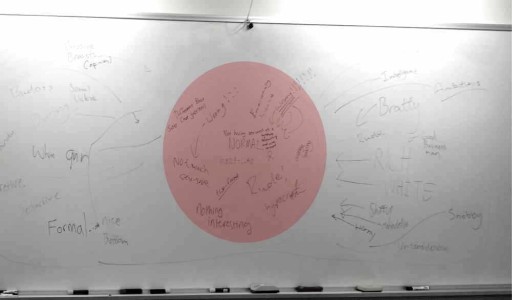 Although last on the list of 12 Hard Lessons, the concept of “normal” is one of the most important ideas I want to get across to my students. I left school with a clear delusion that there was a type of person who was “normal”, and that this included being good looking, confident, happy and high achieving…all of the time. Inadvertently, the various adults in my life had shaped this idea, by hiding from me the difficulties and variations that life throws at us. No one spoke of their own problems, no one showed that life has its downs as well as its ups.
Although last on the list of 12 Hard Lessons, the concept of “normal” is one of the most important ideas I want to get across to my students. I left school with a clear delusion that there was a type of person who was “normal”, and that this included being good looking, confident, happy and high achieving…all of the time. Inadvertently, the various adults in my life had shaped this idea, by hiding from me the difficulties and variations that life throws at us. No one spoke of their own problems, no one showed that life has its downs as well as its ups.
Hollywood and the wider media are always a willing conspirator in this, showcasing this ideal human time and time again. Of course, villains might appear as well, but only ever as a counterpoint to the perfectly happy, handsome people who eventually win the day. It was not until part the way through university that I realised that striving to be “normal” was making me miserable, as I was trying to attain something that simply did not actually exist.
Of course, the risk in talking about all of this to students is that you come off sounding crazy or preachy, neither of which I really wanted. I needed to be more subtle about it. In the end I decided to show students a couple of of movie posters, for films that really send out all the kind of messages. Mr. & Mrs. Smith (sexual violence) and The Wolf of Wall Street (greed, lust and egos gone wild) seemed a perfect fit. I put the images on the board, and asked students to write words around them, describing the three main characters. As you can see from the image below (click to enlarge), what we got was a lot of works like “nice bottom”, “white”, “rich”, “snobby”, “bratty”, “gun” and “rude” (students were hesitant to write anything provocative, until I slyly added “massive breasts”, and which point they suddenly opened up). Some attributes listed were positive, but generally students could see that here were some role models which were held up to be esteemed, but were in fact not pleasant at all. Certain aspects, such as those focusing on appearance hint towards how physically, and artificially, perfect the characters are.
I then removed the movie covers, and drew a circle in the middle, to which students were invited to put words which they would use to describe themselves. Some of the phrases that came up were “average looking”, “emotionally unstable”, “nothing interesting”, “hypocrite”, “two faced”, “different bust sizes (not just DDD)”, “middle class”:
Looking at the middle circle is very revealing. Students see how different they are to media stars, and can clearly point out the variations amongst themselves as a group. They see a wide range of variables within the human conditions. In closing, and hopefully this is a seed planted for another day, I introduced the idea that there simply is no normal: yes, there are stereotypes in the media, but in reality we are all highly variable, and we need to appreciate that variability.
As the time allowed for this discussion was only 20 minutes, we had to move very fast. However, having brought the students to a point where they were very honest, open and interesting, it really needs another session to draw out some more ideas and conclusions. My aim for this second session will be to have students really think about the many ways in which we are all different. In particular I will look at varying levels of happiness, and discuss the concept of depression: that sometimes it is just very hard to be happy, and this happens for lots of reasons to lots of people. And, ironically, it seems to be quite normal…even if no one talks about it.

